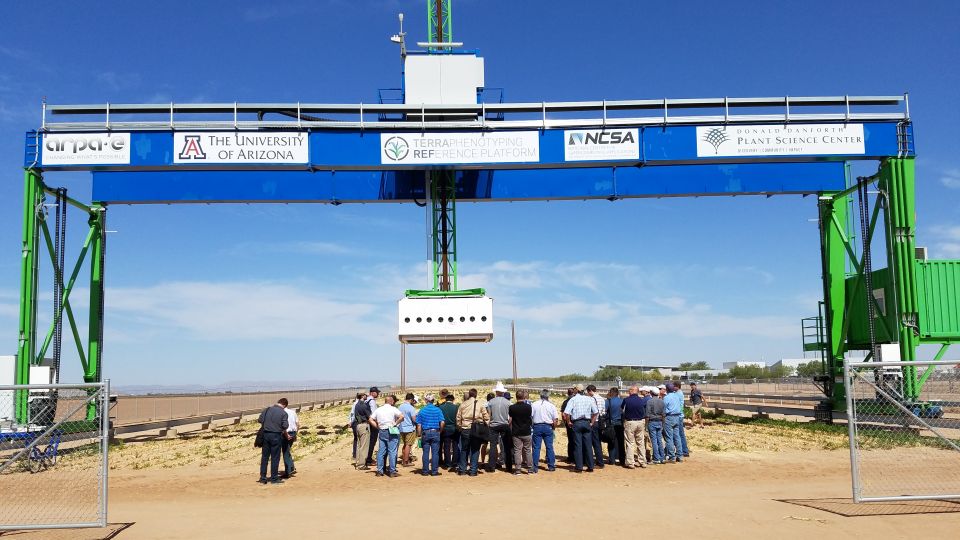Precision Agriculture: Visualizing the Future
I wrote this article the morning after the completion of the second annual PrecisionAg Vision Conference from my corner suite in Phoenix, AZ. Fortunately, the hot tub was far from the best thing about the experience, as I — along with virtually every attendee I talked to — took home a great deal of information and gained a ton of perspective on the ag technology industry. Space limitations aside, it’s a shame all of you couldn’t have joined us.
It will take far longer than the 12 hours it’s been since we put the event to bed to digest all that transpired, but here are a few tidbits I took home from my perspective as conference coordinator.

The world’s largest robotic field scanner at the University of Arizona’s Maricopa Agricultural Center near Phoenix, AZ.
The event began with a field tour to visit one of two gigantic imaging robots in the world, situated at an experiment station in Maricopa run by the University of Arizona. Built with funding from the U.S. Department of Energy, the so-called “scanalyzer” is designed to gather and transmit an unprecedented quantity of crop data from an experiment plot about the size of a football field.
The scanning unit, built by German manufacturer LemnaTech, is perched high above the field on rolling scaffolding that smoothly moves the scanner over the field as it utilizes multiple sensors to collect the data.
What was apparent to me and others during the question session was that imagery is still a work in progress. Factors such as time of day and sun angle, among other factors, greatly affect the accuracy and consistency of the data being collected.
Opening the conference were two presentations that provided a stark juxtaposition of perspectives that we created on purpose. The first talk was a wild ride into the future of technology and its myriad possibilities, delivered by Aidan Connolly at Alltech. Connected, automated, and frighteningly free of human intervention, it demonstrated an agriculture ecosystem way different than today.
By contrast, we then invited Matthew Brown of International Farming Corp., which influences agronomic practices and technology adoption on tens of thousands of acres across the country, to deliver the skeptic’s rebuttal.
Brown was harsh on the current system, expressing the frustrations that many, many of you and your customers feel about how precision agriculture fails miserably to meet the promise it holds. How in the world will we get from there to here?
The reaction was as mixed as I had hoped. Some said it was a cathartic exercise to get it out on the table, and others were critical that we would back the bus over the ag tech industry at a “Vision” conference. I can see both sides, but it did get folks talking.
The rest of the conference was a terrific mix of interesting technologies and ideas, and we had a lot of terrific discussion (Look up MicroSoft’s FarmBeats initiative on the Internet and be amazed). Also, I got to moderate a panel of the Big Three equipment companies … could compatibility and standardization be close at hand? I’m feeling like it might be, so let’s keep talking about it and hold the manufacturers accountable.
More insights are soon to come in the pages of CropLife® and PrecisionAg® Professional magazines and websites, so stay tuned. And if your room has a hot tub, I suggest you seize the day.






